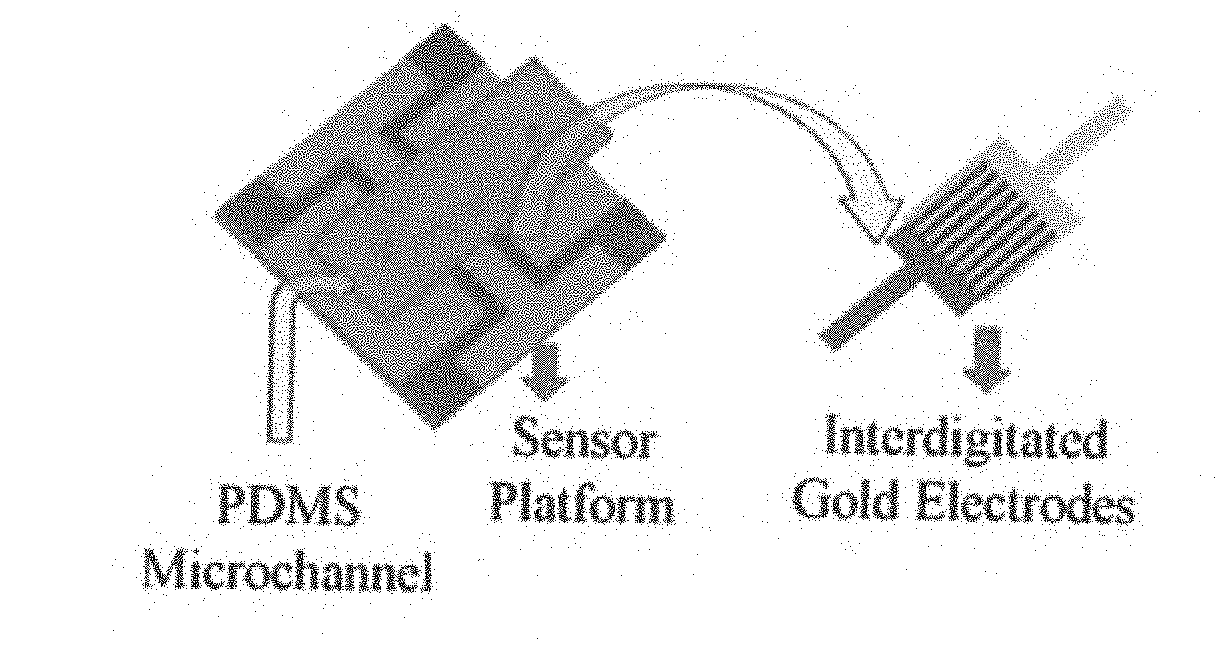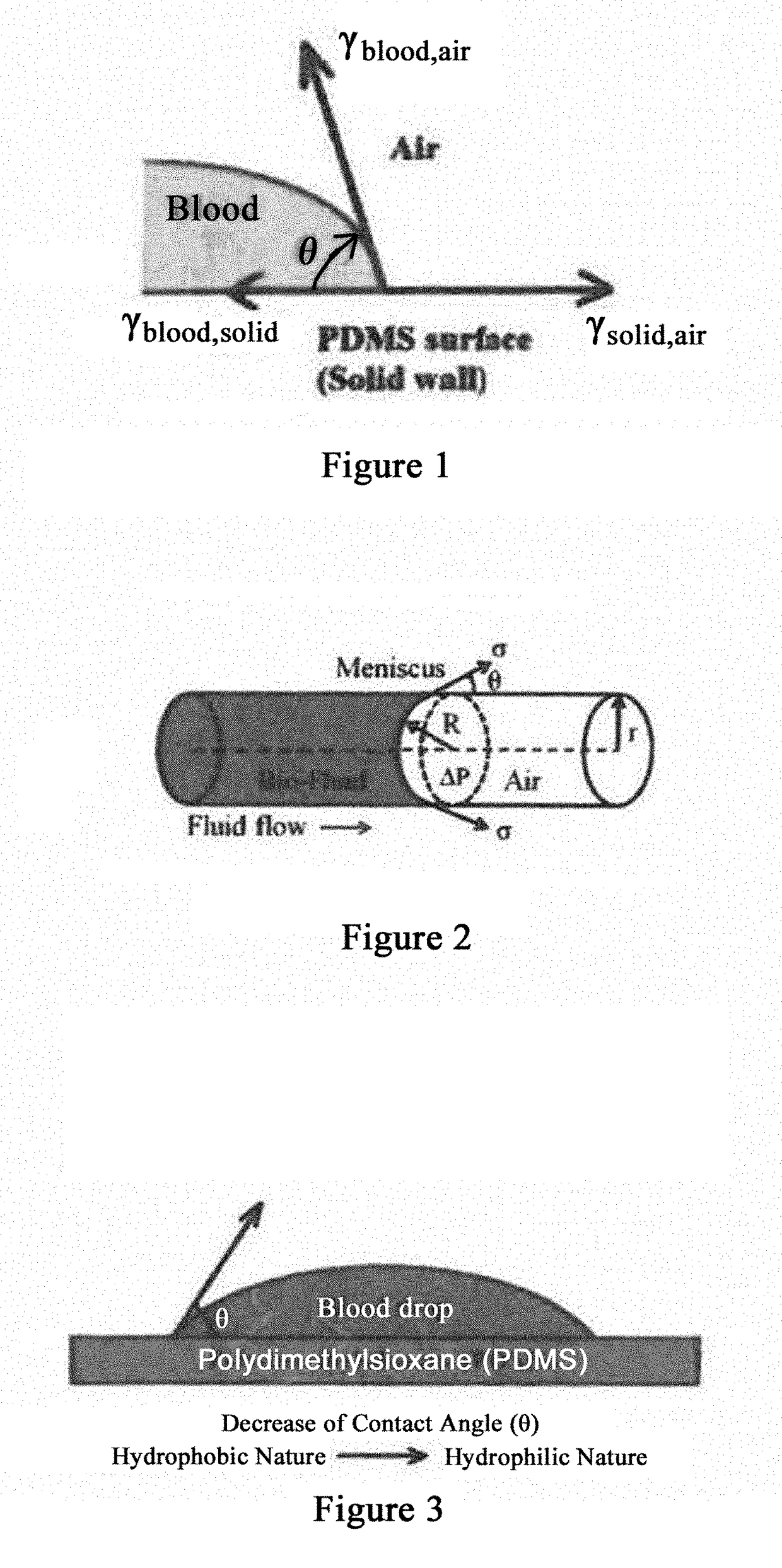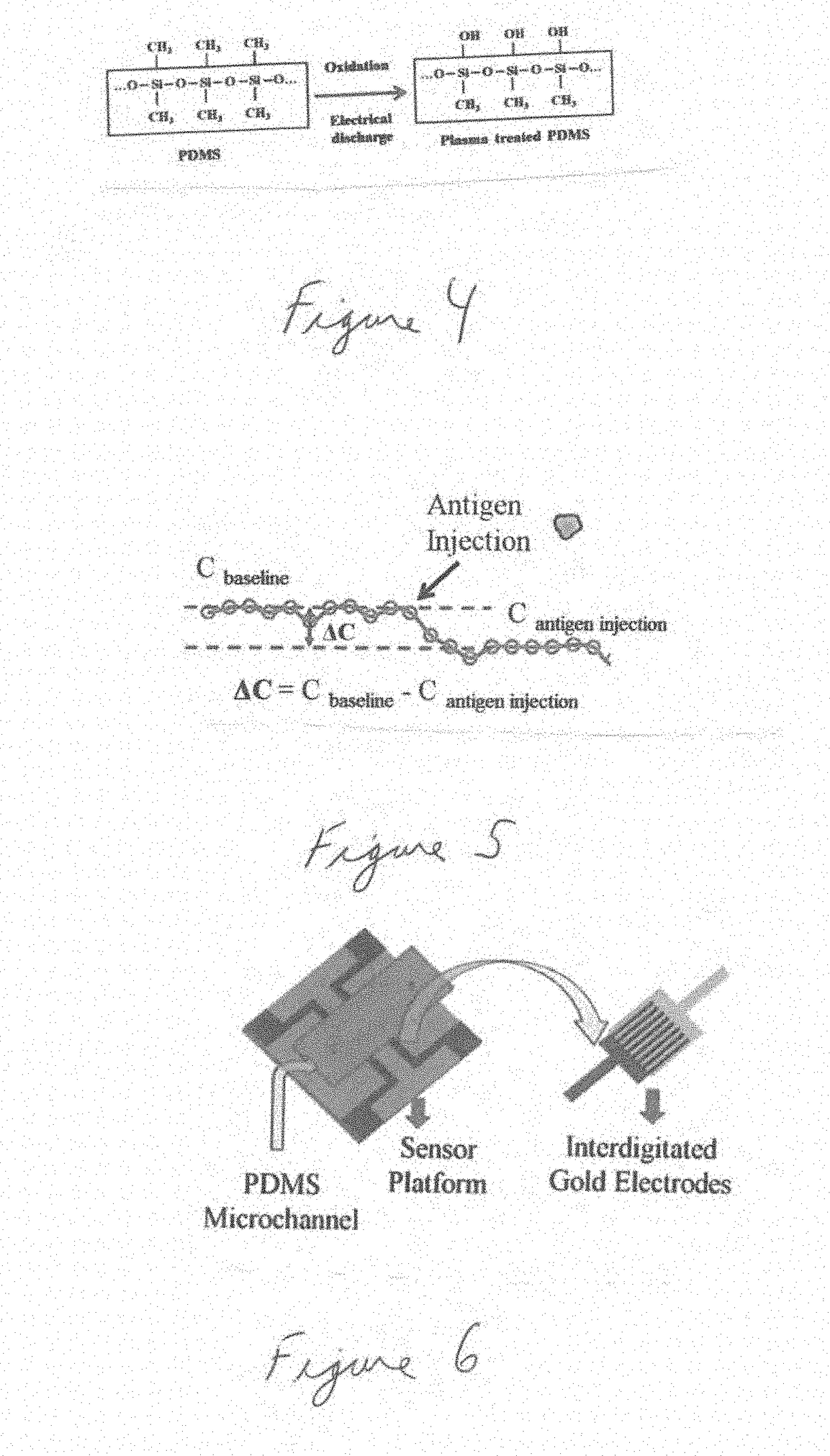Biomarker detection and self-separation of serum during capillary flow
a biomarker and capillary flow technology, applied in fluid controllers, laboratory glassware, instruments, etc., can solve the problems of inability to utilize other patient samples other than blood for diagnosis and monitoring, current state of the art biochips, and difficulty in detecting screening and monitoring in the early phase after onset, so as to reduce manpower and effort
- Summary
- Abstract
- Description
- Claims
- Application Information
AI Technical Summary
Benefits of technology
Problems solved by technology
Method used
Image
Examples
Embodiment Construction
[0065]In general, the present disclosure overcomes the disadvantages of past attempts and provides several other advantages. In addition, it also overcomes the disadvantages of past attempts to detect disease-specific antigens. As used herein, “sample” refers to a sample from a mammalian patient. Non-limiting examples of a sample include tissue or bodily fluids. Bodily fluids can include blood, urine, saliva, spinal fluid, any combination of these, or any other fluid originating in the body. Where blood is referenced specifically, it is referred to merely for illustrative purposes and is in no way meant to limit the scope of the invention.
[0066]Point of care (POC) micro biochip serves to diagnose cancer at earlier stages with its innovative and state of the art ‘sensing technology’ to identify the existence of cancer antibodies in the micro volume of blood sample with no external devices and no sample preparation. Some of the features of the present disclosure are as follows: (a) In...
PUM
 Login to View More
Login to View More Abstract
Description
Claims
Application Information
 Login to View More
Login to View More - R&D
- Intellectual Property
- Life Sciences
- Materials
- Tech Scout
- Unparalleled Data Quality
- Higher Quality Content
- 60% Fewer Hallucinations
Browse by: Latest US Patents, China's latest patents, Technical Efficacy Thesaurus, Application Domain, Technology Topic, Popular Technical Reports.
© 2025 PatSnap. All rights reserved.Legal|Privacy policy|Modern Slavery Act Transparency Statement|Sitemap|About US| Contact US: help@patsnap.com



